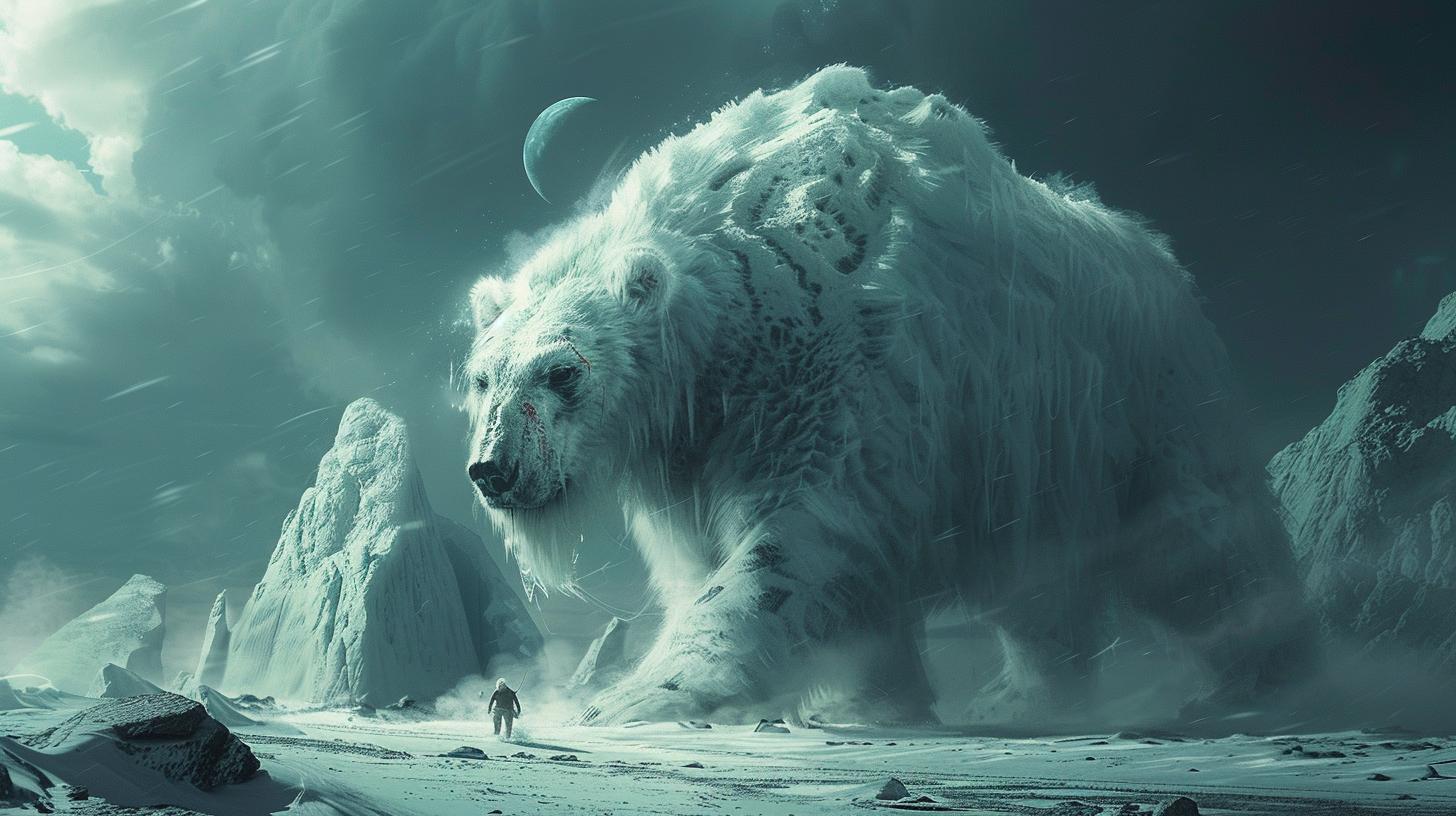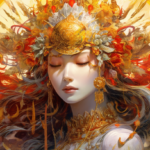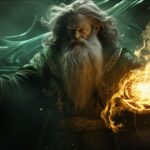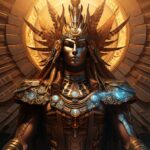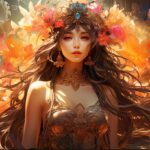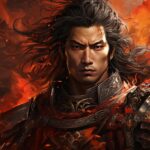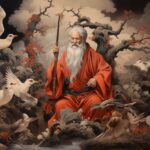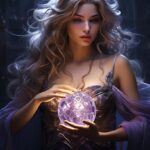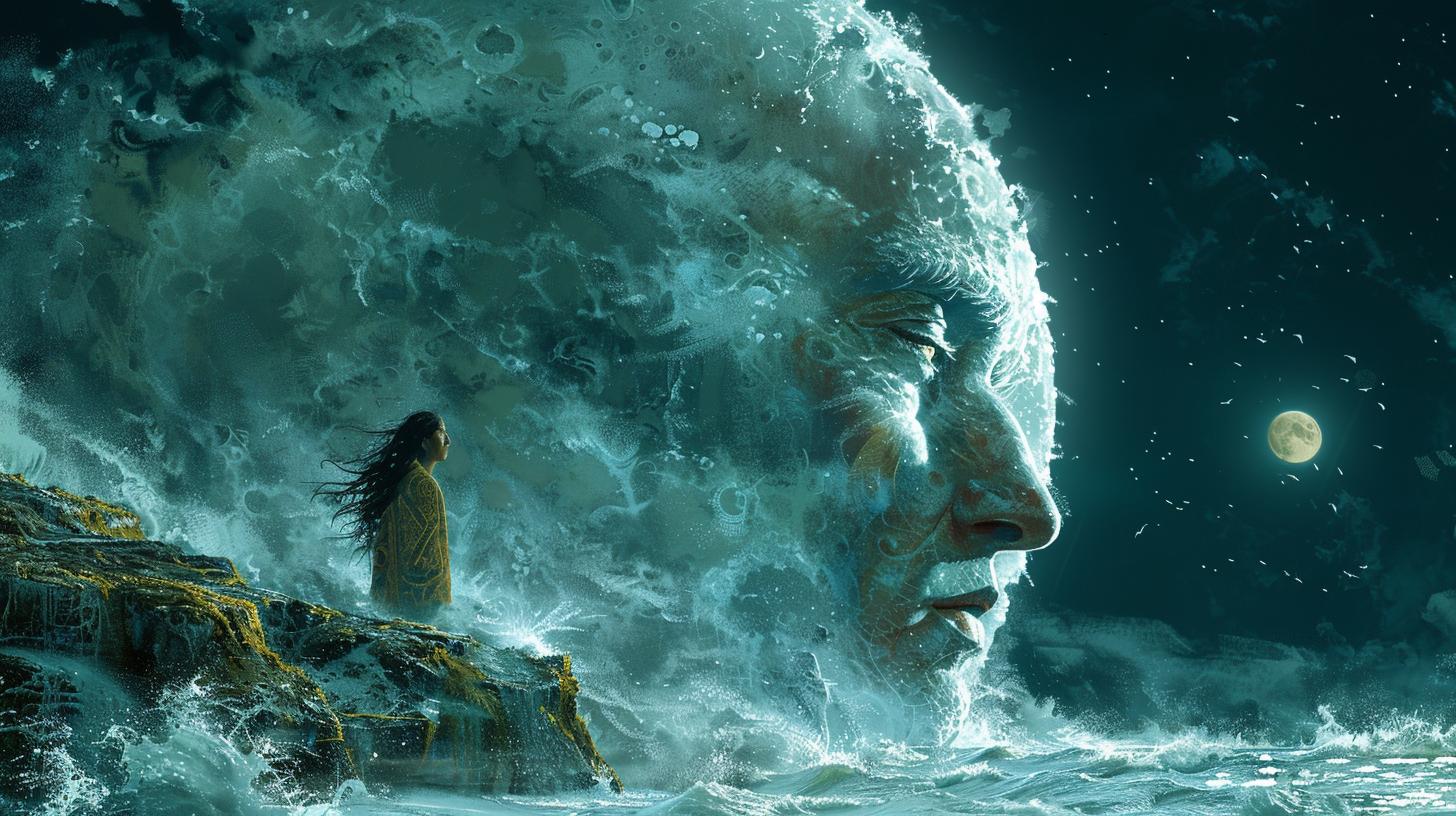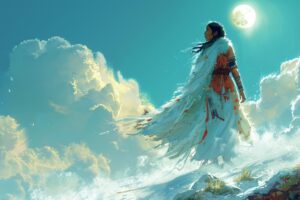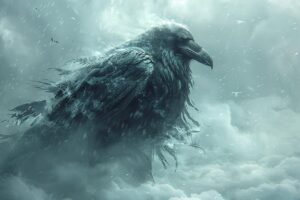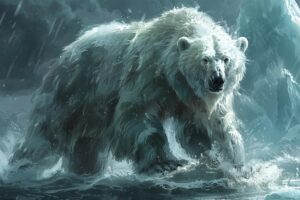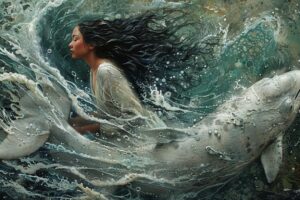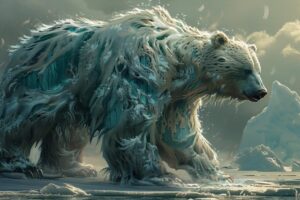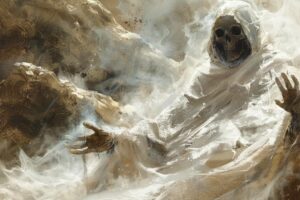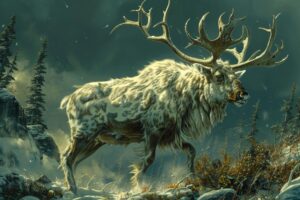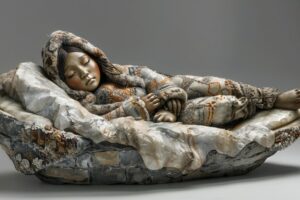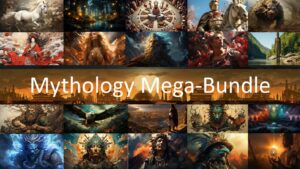Igaluk Moon God: An In-depth Look into Inuit Mythology
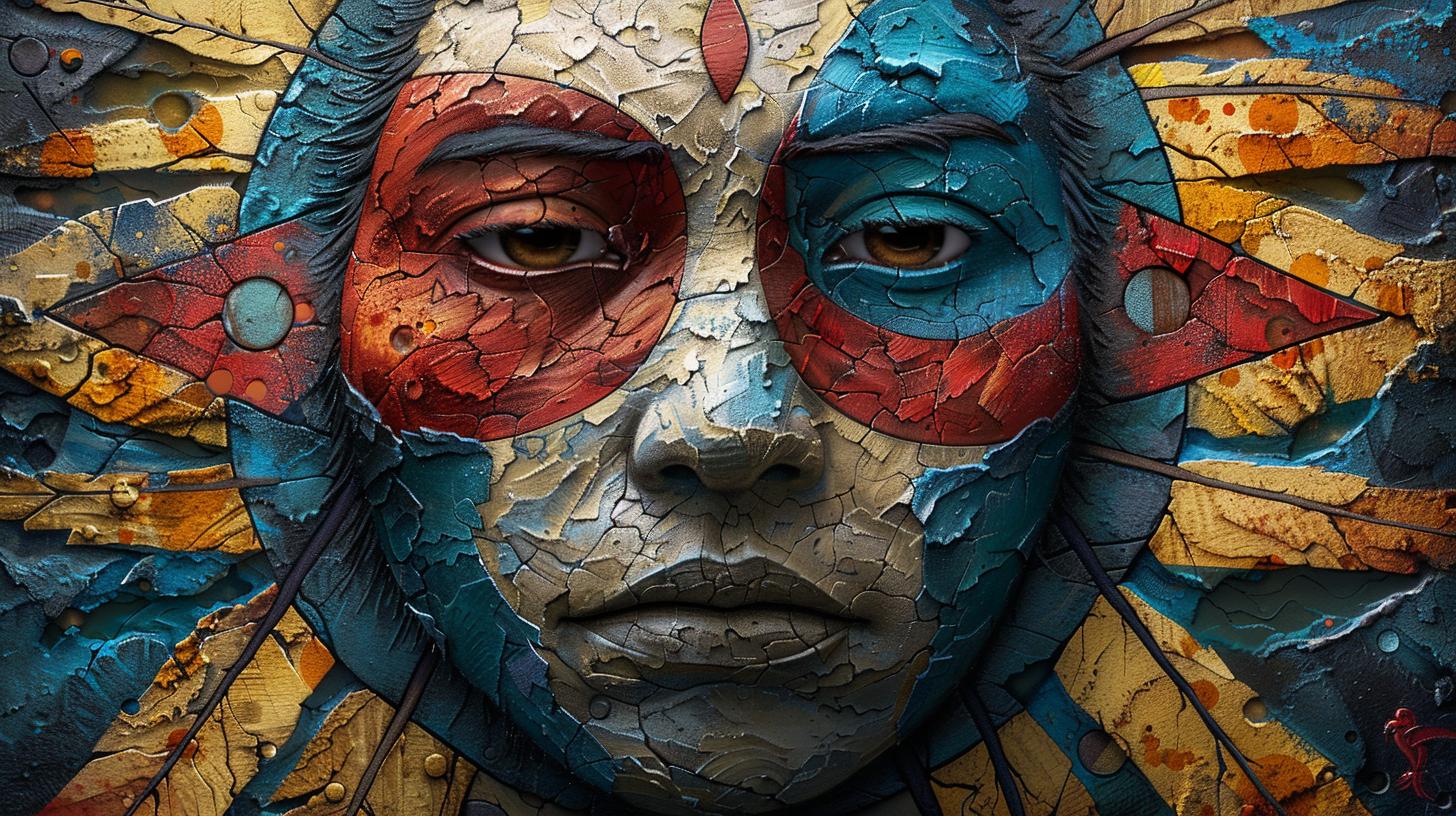
Igaluk, the moon god in Inuit mythology, is a central figure revered for his role in ruling over natural phenomena. The legend of Igaluk and his sister Malina highlights the cosmic balance between the sun and the moon, reflecting the interconnectedness of celestial and earthly forces in Inuit beliefs.
The Origin of Igaluk in Inuit Mythology
Igaluk as a Human and his Transformation into the Moon God
In Inuit mythology, the story of Igaluk begins with him as a human being on Earth. Through a series of events, Igaluk undergoes a profound transformation that leads to his ascension as the revered Moon God in Inuit cosmology.
The Journey of Igaluk
- Descended from a lineage of earthly beings
- Exemplified human experiences and challenges
The Transition to Moon God
- Marked by a divine intervention or revelation
- Signified a shift in Igaluk’s essence and purpose
Igaluk’s Evolution into a Cosmic Entity
As Igaluk ascends to his role as the Moon God, his essence transcends earthly limitations, embodying the power and influence over natural phenomena in the Arctic regions. This evolution signifies a pivotal moment in Inuit mythology, where the human becomes divine.
The Legend of Igaluk and Malina
Igaluk and Malina’s tale unveils a profound saga of betrayal and transformation within Inuit mythology. The intricate narrative delves into the cosmic balance harmonizing between the sun and moon, epitomizing the interconnectedness of celestial and earthly realms.
The Betrayal and Transformation of Igaluk and Malina
The poignant storyline of Igaluk and Malina portrays a tragic betrayal that led to a transformative journey into celestial beings. The repercussions of this profound betrayal echo through the heavens, encapsulating the delicate interplay between light and darkness.
The Cosmic Balance between the Sun and Moon
Within the myth of Igaluk and Malina, the cosmic balance between the sun and moon emerges as a foundational concept. Their eternal dance across the celestial sphere reflects the timeless harmony inherent in Inuit cosmology, symbolizing the cyclical nature of life’s dualities.
Igaluk as the Supreme Being in Inuit Cosmology
Igaluk is revered as the supreme being in Inuit cosmology, commanding great authority over natural phenomena in the Arctic regions.
Igaluk’s Role in Ruling over Natural Phenomena in the Arctic Regions
Understanding Igaluk’s pivotal role sheds light on how the Inuit perceive and interact with the natural world.
Here are some key aspects:
- The Influence of Igaluk’s Light: The moon’s waxing and waning cycles are believed to directly impact the Arctic landscape, affecting everything from tides to animal behavior.
- Connections to Seasonal Changes: Inuit communities closely observe the moon’s movements, using them as a guide for hunting, fishing, and other seasonal activities essential to survival.
Igaluk’s Guidance in Daily Life
For the Inuit, acknowledging Igaluk’s power is not just a matter of belief but a way of life.
His significance permeates daily activities and rituals, shaping their spiritual connection to the environment.
The Importance of Family and Relationships in Inuit Culture
Family and relationships hold a deep significance in Inuit culture, reflecting the interconnectedness of celestial and earthly forces in their beliefs.
The Interconnectedness of Celestial and Earthly Forces in Inuit Beliefs
In Inuit culture, the family unit is a crucial pillar that sustains communal harmony and balance.
The bond between family members is seen as a reflection of the harmonious relationship between celestial and earthly forces. The Inuit people believe that their actions and interactions within the family have a direct impact on the natural world, reinforcing the idea of interconnectedness.
The Role of Elders in Family Dynamics
- Elders play a central role in Inuit families, serving as the keepers of traditional knowledge and wisdom.
- Their guidance and teachings are highly valued, shaping the beliefs and values passed down through generations.
- Elders act as the bridge between the past and the present, ensuring cultural continuity and preserving the spiritual connection to the land and sky.
The Concept of Kinship and Community
- Inuit societies place great importance on kinship ties and community relationships.
- Individuals are interconnected through kinship networks, fostering a sense of belonging and mutual support.
- Shared values and responsibilities within the community strengthen social cohesion and solidarity.
The Sacred Nature of Family Bonds
Family relationships are considered sacred in Inuit culture, embodying the essence of interconnectedness and mutual respect.
The love and care shared within families mirror the harmony observed in the celestial realm, reinforcing the idea of a unified cosmic order.
The Rituals and Traditions Upholding Family Unity
- Ceremonies and rituals within Inuit families serve to strengthen familial bonds and honor ancestral connections.
- These traditions reinforce the spiritual and cultural values that underscore the importance of kinship and community in Inuit society.
- Rites of passage and communal celebrations mark significant milestones in family life, emphasizing the interconnectedness of individuals within the larger societal framework.
The Traditions and Reverence for Igaluk in Inuit Communities
The legacy of Igaluk holds significant reverence in Arctic indigenous cultures.
Through generations, Inuit communities have preserved traditional practices and beliefs surrounding the mythical figure.
The Legacy of Igaluk in Arctic Indigenous Cultures
Inuit communities across the Arctic region continue to honor Igaluk’s legacy through rituals and ceremonies that acknowledge his role as the moon god. The tales of Igaluk are passed down orally, ensuring his significance is never forgotten.
The Dualities and Symbolism in the Myth of Igaluk
In the myth of Igaluk, the interplay of dualities and symbolism is a prominent theme that delves deep into the cosmic balance between light and darkness. This intricate narrative reflects the complexities of Inuit spirituality and the interconnectedness of celestial forces.
Exploring the Symbolism of Light and Darkness in the Tale of Igaluk
The tale of Igaluk and his transformation into the moon god embodies the essence of light and darkness. The contrasting elements of the sun and the moon represent the perpetual cycle of day and night, symbolizing the ever-present duality in nature.
Through the story of Igaluk and his sister Malina, the myth illustrates the eternal dance between light and darkness, showcasing the inseparable bond between opposing forces. The symbolism of light as a source of life and darkness as a realm of mystery highlights the delicate equilibrium that governs the universe in Inuit belief.
The Cosmic Harmony Between Day and Night
Within the myth of Igaluk, the celestial harmony between day and night is a central motif that underscores the divine order of the cosmos. The sun’s radiant glow and the moon’s gentle shimmer symbolize the equilibrium between light and darkness, representing the cyclical nature of existence.
By exploring the intricate symbolism of light and darkness in the tale of Igaluk, we gain insight into the profound interconnectedness of cosmic dualities and their role in shaping the spiritual landscape of Inuit mythology.
The Continuing Influence of Igaluk in Inuit Society
Igaluk, as the moon god in Inuit mythology, continues to play a significant role in modern Inuit cultural practices. His enduring influence is reflected in various aspects of Inuit society, highlighting the deep-rooted reverence for this celestial deity.
Igaluk’s Significance in Modern Inuit Cultural Practices
Within contemporary Inuit society, Igaluk remains a revered figure due to his role as the moon god and ruler of natural phenomena. His influence can be seen in:
- Ceremonies and Rituals: Igaluk is often invoked in traditional ceremonies and rituals, symbolizing guidance and protection.
- Art and Crafts: Inuit artists frequently depict Igaluk in their artworks, showcasing his importance in their cultural expressions.
- Storytelling and Oral Traditions: Tales of Igaluk’s adventures and transformations continue to be passed down through generations, preserving his legacy.
The Legacy of Igaluk in Arctic Indigenous Cultures
Across Arctic indigenous communities, Igaluk’s legacy endures as a symbol of transformation and resilience.
His mythological journey serves as a source of inspiration and guidance, embodying the interconnectedness between celestial forces and earthly beings.
Igaluk Moon God: A Revered Figure in Inuit Mythology
Igaluk’s Legacy as a Symbol of Transformation and Resilience
Inuit mythology reveres Igaluk as a symbol of transformation and resilience. His story exemplifies the power of overcoming challenges and adapting to change. By embodying these qualities, Igaluk serves as an inspiration for navigating life’s obstacles with grace and strength.
The Evolution of Igaluk’s Story
The tale of Igaluk’s journey from human to moon god reflects the Inuit belief in personal growth and spiritual transformation. His legacy continues to resonate with individuals seeking to embrace change and find inner strength through challenges.
The Symbolism of Igaluk in Inuit Culture
Igaluk’s representation as a revered figure in Inuit culture symbolizes the importance of adaptability and resilience in facing life’s adversities. His transformative nature serves as a reminder of the power of perseverance and the ability to overcome hardships.
Embracing Igaluk’s Teachings
Through the teachings of Igaluk, individuals are encouraged to embrace change, learn from their experiences, and strive for personal growth. His story inspires a mindset of resilience, adaptability, and the courage to face life’s challenges with determination and grace.
- Adaptability and Resilience as Core Values
- Embracing the Journey of Transformation
- Finding Strength in Adversity
The Enduring Message of Igaluk
Igaluk’s legacy as a revered figure in Inuit mythology carries an enduring message of hope, transformation, and the resilience inherent in every person’s journey. His story serves as a guiding light for those seeking to navigate life’s complexities with courage and fortitude.
The Relationship between Igaluk and Other Inuit Deities
Examining the Interplay of Igaluk with Other Gods and Goddesses in Inuit Mythology
In Inuit mythology, the relationship between Igaluk and other deities is complex and interconnected. Through stories and traditions, the interactions between Igaluk and his divine counterparts reveal deep symbolic meanings and cosmic dynamics within the Inuit pantheon.
The Role of Igaluk in the Pantheon
Igaluk holds a unique position among the Inuit deities, symbolizing the cyclical nature of time and celestial bodies. As the moon god, Igaluk’s interactions with other gods and goddesses reflect the harmony and balance essential to Inuit cosmology.
Igaluk and Nanook, the Polar Bear God
- Nanook, the powerful polar bear god, is often depicted in legends alongside Igaluk. Their relationship signifies the interconnectedness between the moon and the arctic wildlife, highlighting the importance of animal spirits in Inuit belief.
Igaluk and Sedna, the Sea Goddess
- Sedna, the sea goddess, shares a unique bond with Igaluk, representing the connection between the celestial and aquatic realms in Inuit cosmology.
Their interactions symbolize the interdependence of land and sea in Inuit culture.
The Mythical Encounters of Igaluk with Other Deities
Throughout Inuit folklore, tales of Igaluk’s interactions with other deities shed light on the complex relationships and transitions within the celestial hierarchy. These mythical encounters reveal the intricate web of connections that shape the spiritual landscape of the Inuit people.
The Lunar Dance of Igaluk and Aningan
- Aningan, known as the moon god in Greenlandic Inuit mythology, shares a celestial dance with Igaluk, symbolizing the interplay of light and darkness, day and night. Their eternal pursuit reflects the cyclical nature of the lunar phases and the changing tides of time.
The Shamanic Revelations with Igaluk and Akycha
- Akycha, the shamanic spirit guide, frequently appears in visions and dreams alongside Igaluk, offering wisdom and guidance in the spiritual realms.
Their shared journey through the cosmos signifies the interwoven destinies of mortals and gods in Inuit mythology.
The Mythical Journey of Igaluk and its Relevance Today
The legendary tale of Igaluk presents a timeless narrative of transformation and resilience that continues to resonate within Inuit society. The mythical journey of Igaluk depicts a symbolic progression from darkness to light, mirroring the cyclical nature of life’s challenges and triumphs.
- Exploring the enduring significance of Igaluk in modern Inuit cultural practices
- Reflecting on the transformative power of the moon god as a symbol of adaptation and strength
- Recognizing the timeless relevance of Igaluk’s story in navigating the complexities of contemporary life
.

